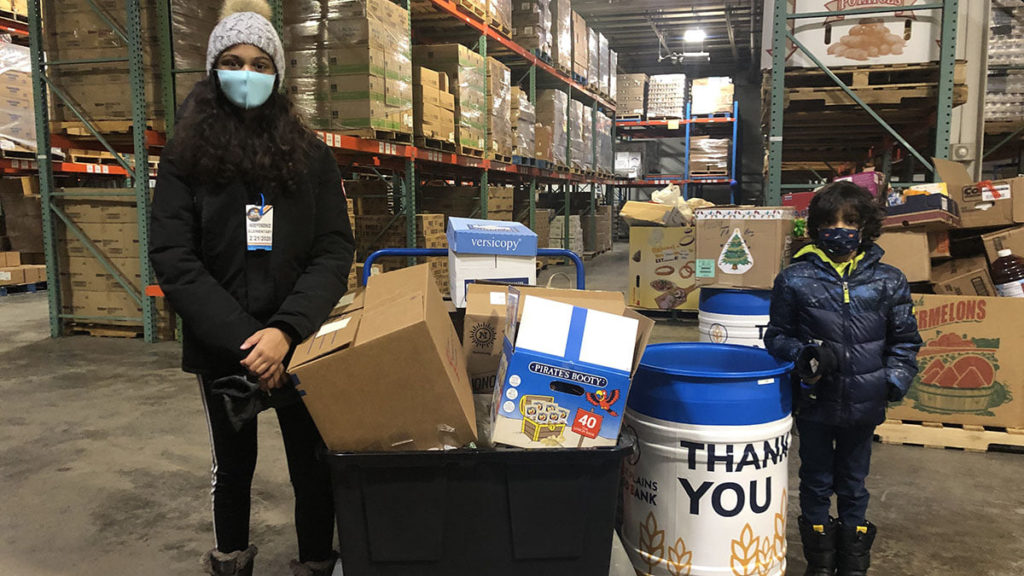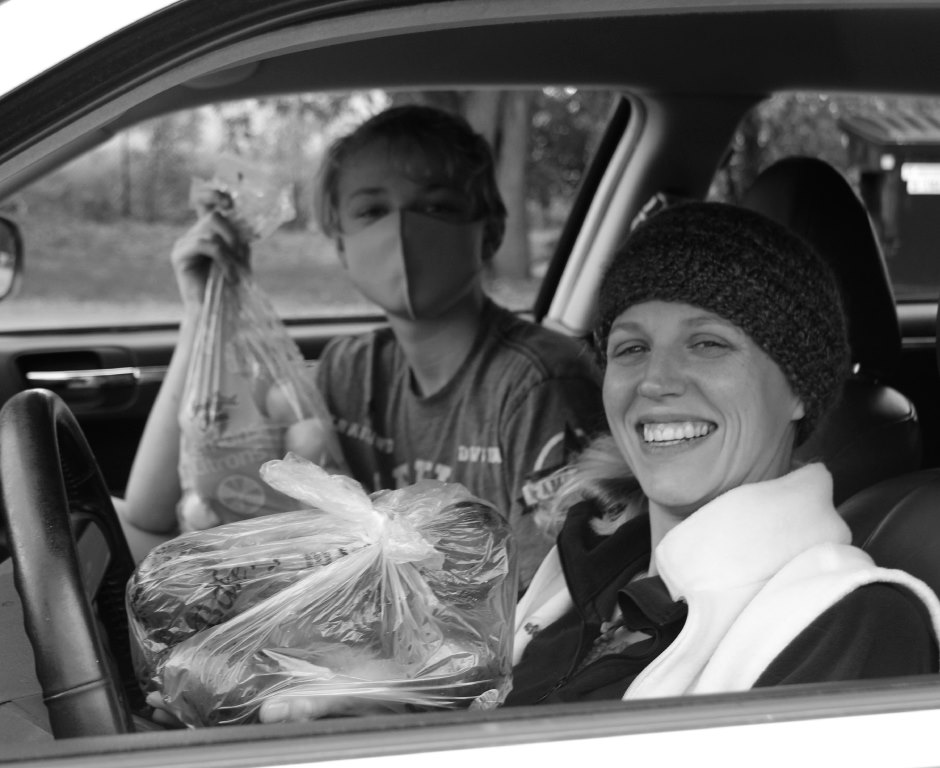As an organization that’s deeply committed to ending hunger throughout North Dakota and Western Minnesota, Great Plains Food Bank was familiar with trauma and crises. Among the 102,000 people it served, many struggled daily just to survive. And then came the pandemic. Within a week, the non-profit’s client base swelled to 145,000, just as food donations stopped. An anecdotal survey of Great Plains’ partner agencies estimates that approximately 25 to 40 percent of the food bank’s clients are new.
“Our entire business model flipped on its head overnight,” explains Great Plains Food Bank President, Melissa Sobolik. “We suddenly had to figure out how to serve more with less food. We got very efficient. Unfortunately, we weren’t always able to give families as much as we would have liked, but we were determined not to turn anyone away.”
“Our entire business model flipped on its head overnight,”
explains Great Plains Food Bank President, Melissa Sobolik.
To appreciate what a monumental undertaking it’s been, it’s helpful to know how Great Plains Food Bank normally operates. The organization collaborates with hundreds of partners to recover surplus and perishable food products. Retailers, like grocers, Target, Walmart, and Sam’s Club regularly donate a lot of product, as do a number of growers, processors, and manufacturers who send shelf-stable items like canned goods. Great Plains’ clients also benefit from food drives, often run by local companies.
Each day the team sorts, repacks, and prepares food for distribution to 200 food pantries, shelters, and meal programs, delivering more than 21 million pounds of product annually. This effort depends upon the generosity of an army of 5,000 dedicated volunteers who contribute about 20,000 hours’ worth of time each year.
The arrival of COVID-19 affected every single aspect of Great Plains Food Bank’s operations. Retailers ran out of stock as anxious customers hoarded food and supplies. As canned goods flew off the shelves, manufacturers ran through their entire aluminum supply and had no way to can more food. Donations that normally arrived within weeks were delayed for months. Food drives screeched to a halt as companies went remote. And the army of volunteers dwindled as safety protocols were put in place.
Remarkably, the Food Bank never cancelled a program or service. Instead, they sprang into action. The first step was to get food…fast. Melissa recalls, “We normally don’t buy truckloads of food — they’re usually donated. But we had to put dollars on the line and purchase truckloads at $25,000 to $35,000 per truck. We ordered as much as we could, hoping that it would come in as quickly as possible.”
Staffing came next. After a few weeks with no volunteers, they began hosting groups of up to ten, masked and distanced, in two or three shifts a day. Inevitably, there were many last-minute cancellations, as volunteers tested positive or had to quarantine. One positive outcome from the loss of volunteers was the organization’s ability to offer paying jobs. As many companies and organizations were laying people off, Great Plains staffed up, hiring five permanent positions and a number of temporary jobs.
Another significant pivot involved technology. Virtual food drives allowed people to donate or sponsor a case of food. Great Plains teamed up with musicians — some local, some national with local ties — to present free virtual concerts. The concerts were broadcast on Facebook Live and the staff and performers posted donation links. They were so successful in raising both funds and goodwill, that the organization plans to keep offering them.
An area that can be especially challenging for non-profits was, surprisingly, not an issue for Great Plains: fundraising. Melissa says, “We are very, very fortunate that when disaster strikes, most people think about basic human needs, so donors approached us. And our development team was incredible. On day two they started exploring what they could do differently. We deployed some creativity to encourage our community to donate. And they stepped up in unbelievable ways.”
As Great Plains Food Bank moves out of crisis mode and into longer-term recovery, they’re finally able to look to the future. The staff is finishing up a new strategic plan with the guidance of Creation in Common. And when the current CEO retires in June, Melissa will transition into that role. Her first priority is her staff, encouraging them to breathe and take some time to care for themselves. She’s also looking forward to welcoming back the volunteers.
“We will always have opportunities for people to help. We encourage you to join us as volunteers and advocates — you can sign up on our website. We still need food, so virtual or in-person food drives are very welcome. And if you aren’t in our community, please give to your local food pantry, because they’re on the front lines doing this work, too. And it takes all of us to build the movement to end hunger.”
Learn more about Great Plains Food Bank by going here.




